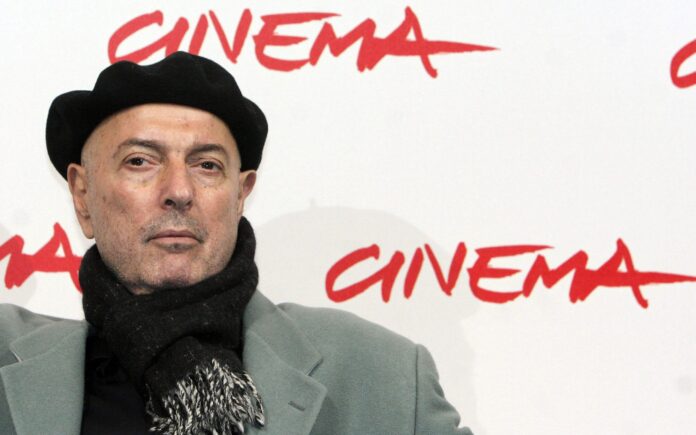Hector Babenco, who has died aged 70, was greatest recognized for the movie Kiss of the Spider Girl, for which in 1985 he grew to become the primary Latin American director to be Oscar-nominated.
Based mostly on Manuel Puig’s novel set within the “soiled warfare” of repression in Babenco’s native Argentina, the movie confounded many conventions of cinema. Not solely was its narrative dreamlike, and its setting in a jail cell claustrophobic, however its central relationship was considered one of sexual attraction between two males. “My job,” stated Babenco of the mise en scène, “was to make it contemporary and open, dynamic.”
Raul Julia performed a political prisoner, whereas William Harm’s character – who whiled away the time serious about dubiously glamorous Nazis – had been arrested for soliciting minors. But their performances drew rave critiques, with Harm happening to win the Academy Award for Greatest Actor. The movie was additionally the primary impartial manufacturing to be nominated for Greatest Movie, although it misplaced to Out of Africa.
Hector Eduardo Babenco was born in Mar del Plata, Argentina, on February 7 1946. His mother and father had been Jewish, his mom born in Poland and his father, who labored as a gaucho after which as a salesman, of Ukrainian descent. He and Hector by no means noticed eye to eye. “My father was a gambler and a liar,” recalled Babenco, “however he additionally advised fantastic tales.”
Hector was a shy boy who discovered refuge within the cinema, to which he would go 10 occasions every week. He dropped out of faculty, by no means went to school and supported himself by odd jobs comparable to promoting garments door-to-door. As soon as, working as a lodge porter, he carried François Truffaut’s baggage.
His first expertise on set was as an additional in a movie shot in Argentina by the Italian director Dino Risi. Following a quarrel about artwork along with his father, Babenco left for Spain at 18, partially to keep away from navy service; anti-Semitism was rife within the armed forces. He spent the subsequent 4 years sleeping tough and dealing as an additional in spaghetti Westerns comparable to Sergio Corbucci’s Django.
Within the late Sixties, he returned to Latin America however selected to settle in Brazil, whose multi-racial tradition he discovered extra stimulating than that of his personal nation.
He continued to dwell hand to mouth, hawking encyclopaedias, promoting tombstones and taking Polaroid images of diners in eating places. He attributed to those experiences his curiosity as a director in outsiders. “I perceive the marginalised,” he stated, “those that dwell on the border with Dying.”
“It took a number of years to grasp that poverty doesn’t suggest distress,” he mirrored. “My perspective comes from a mix of indignation, shock and compassion.”
His first movie, in 1973, was a biography of the racing driver Emerson Fittipaldi. He started to be taken significantly 4 years later with the story of a celebrated bandit in Rio, Lucio Flavio, which additionally handled police dying squads.
Babenco’s breakthrough was Pixote (1981), slang for “small boy”. It was an uncompromising portrayal of criminality within the favelas, a lot influenced by Italian neo-realism and seen via the eyes of a 10-year-old orphan. The solid was plucked from the streets, notably the protagonist Fernando Ramos, who in 1996 was to be shot useless by the police. Though many advised Babenco that the movie was too brutal and too not like Brazil’s cheerful picture, it proved an enormous hit and was nominated for a Golden Globe.
After the success of Kiss of the Spider Girl, Babenco was provided his decide of Hollywood tasks. That almost all of those didn’t set the field workplace alight was due primarily to his dedication to do issues his manner.
“Hector has imaginative and prescient,” stated Jack Nicholson, “and that comes with a hefty value.” In 1986, he and Meryl Streep had been directed by Babenco in Ironweed, a Melancholy-era story that introduced them each Oscar nominations however not massive audiences.
Babenco adopted it in 1991 with an adaptation of Peter Mathiessen’s novel At Play within the Fields of the Lord. This necessitated a gruelling six-month shoot within the Amazon jungle. The movie ran for greater than three hours and drew few cinemagoers, although it was later an vital visible affect on Avatar.
Having already suffered from most cancers for some years, Babenco ended up directing the solid from a wheelchair. In 1995, he had a bone marrow transplant. When he returned to cinema on a big scale, it was to make a movie of a best-selling novel written by his oncologist.
Carandiru (2002) recounted the tales of the inmates held within the huge, eponymous and notorious remand centre in Sao Paulo, amongst them that of a transsexual, Woman Di. The movie was shot in situ shortly earlier than the jail was demolished, and made use of 8,000 extras. It was hailed as a return to type, although the images that Babenco made thereafter had been in his habitually idiosyncratic vein. His final movie, My Hindu Buddy, which stars Willem Dafoe as a director dying of most cancers, was launched earlier this yr.
Babenco was married 4 occasions: first to an Italian, Fiorella Gionagnoli, with whom he had a daughter, Janka, now a photographer; then to the actress Xuxa Lopes; to an artwork supplier, Raquel Arnaud, with whom he had a daughter, Myra; and since 2010 to the Brazilian actress and former actuality tv star, Barbara Paz, who survives him along with his kids.
Hector Babenco, born February 7 1946, died July 13 2016














